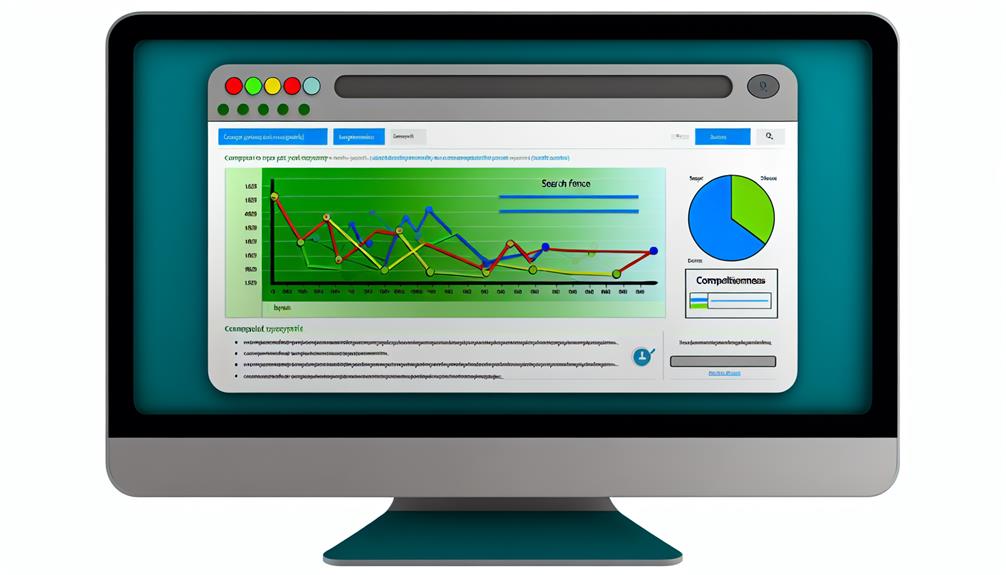Are you struggling to find effective PPC strategies specifically tailored to the pest control industry?
It’s no secret that digital marketing for pest control companies comes with its own set of challenges. However, there are proven PPC strategies that can help you cut through the noise and effectively reach your target audience.
From keyword research and selection to continuous monitoring and optimization, successful PPC strategies can make all the difference in driving quality leads and conversions for your pest control business.
But how exactly do you implement these strategies to maximize your results?
Let’s explore the key components that can elevate your PPC game in the pest control industry.
Table of Contents
ToggleKey Takeaways
- Conduct thorough keyword research using tools like Google Keyword Planner, SEMrush, or Ahrefs to identify high-volume, low-competition terms specific to pest control.
- Create compelling ad copy and design that resonates with the target audience, utilizing A/B testing to optimize headlines, calls to action, and visuals.
- Develop targeted landing pages that address specific pest control needs, prioritizing user experience and implementing conversion tracking to monitor effectiveness.
- Utilize advanced bid management strategies, monitoring performance and adjusting bids based on past campaign performance, keyword performance, ad placement, and audience targeting.
Keyword Research and Selection

When conducting keyword research for your pest control PPC campaign, focus on identifying high-volume, low-competition terms that align with your business objectives and target audience.
Start by conducting a competitive analysis to understand which keywords your competitors are targeting. This will provide insights into market trends and help you identify gaps or opportunities for your campaign.
Utilize tools such as Google Keyword Planner, SEMrush, or Ahrefs to identify long tail keywords that are specific to pest control and have lower competition. These long tail keywords often have higher conversion rates as they’re more targeted.
Additionally, consider negative keywords to filter out irrelevant traffic and ensure your budget is spent efficiently. Negative keywords can help you avoid clicks from users searching for unrelated services, saving your budget for more qualified leads.
Compelling Ad Copy and Design
To capitalize on the insights gained from your competitive analysis and keyword research, craft compelling ad copy and design that resonates with your target audience and drives high click-through and conversion rates. A/B testing is crucial for optimizing your ad copy and design. Use this strategy to compare different versions of your ads and identify which elements resonate best with your audience. Test variations in headlines, calls to action, and visuals to determine the most effective combinations. By continuously refining your ad copy through A/B testing, you can improve your click-through rates and ultimately drive more conversions.
Visual storytelling is a powerful tool for capturing your audience’s attention and conveying your brand message. Incorporate visually appealing graphics and images that evoke emotions and tell a story. Whether it’s showcasing the effectiveness of your pest control services or highlighting customer testimonials, compelling visuals can significantly enhance the performance of your ads.
Targeted Landing Pages

Craft targeted landing pages that address specific pest control needs and guide visitors seamlessly towards conversion.
When creating these pages, it’s essential to prioritize user experience and ensure that they’re designed to facilitate easy navigation and quick access to relevant information.
Implementing conversion tracking allows you to monitor the effectiveness of your landing pages and make data-driven decisions to optimize them further. By analyzing user behavior and engagement, you can continuously refine the pages to enhance their performance.
Split testing different elements such as headlines, images, and calls to action is crucial for identifying the most effective combinations that drive conversions. This innovative approach allows you to experiment with various variations and determine which ones resonate best with your audience.
Furthermore, incorporating a clear and compelling call to action is key to prompting visitors to take the desired actions, whether it’s scheduling a service or requesting a quote.
Effective Bid Management
Utilize advanced bid management strategies to maximize the performance of your PPC campaigns and achieve optimal results in pest control advertising. Effective bid management involves strategic budget allocation and continuous performance analysis to ensure that your ads are reaching the right audience at the right time. By leveraging advanced bid management tools, you can optimize your bids based on factors such as keyword performance, ad placement, and audience targeting, ultimately driving higher conversion rates and maximizing your return on investment.
To start, allocate your budget based on the performance analysis of your past campaigns. Identify the top-performing keywords, ad groups, and demographics, and allocate a higher portion of your budget to these areas to capitalize on what’s already working. Additionally, regularly monitor the performance of your ads and adjust your bids accordingly to ensure that you’re maximizing your visibility in the competitive pest control market.
Innovative bid management strategies also involve leveraging automation and machine learning to make real-time bid adjustments based on factors such as device, location, and time of day. By harnessing the power of data-driven bid management, you can stay ahead of the competition and drive better results for your pest control PPC campaigns.
Continuous Monitoring and Optimization
After effectively utilizing advanced bid management strategies to maximize your PPC campaigns, the focus now shifts to continuous monitoring and optimization for sustained success in pest control advertising. To ensure the ongoing effectiveness of your PPC campaigns, it’s crucial to implement robust performance tracking and analysis.
By continuously monitoring key metrics such as click-through rates, conversion rates, and cost per acquisition, you can identify areas for improvement and make data-driven decisions to optimize your campaigns.
Conversion rate optimization (CRO) is a vital component of continuous monitoring and optimization. Through A/B testing and multivariate testing, you can experiment with different ad copy, landing page designs, and call-to-action buttons to determine which variations yield the highest conversion rates.
This iterative testing process allows you to refine your campaigns and maximize their performance over time.





